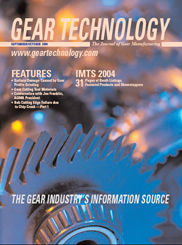Hobs, broaches, shaper cutters,
shaver cutters, milling cutters,
and bevel cutters used in the
manufacture of gears are commonly
made of high speed steel. These specialized gear cutting tools often require properties, such as toughness or manufacturability, that are difficult to achieve with carbide, despite the developments in carbide cutting tools for end mills, milling cutters, and tool inserts.
